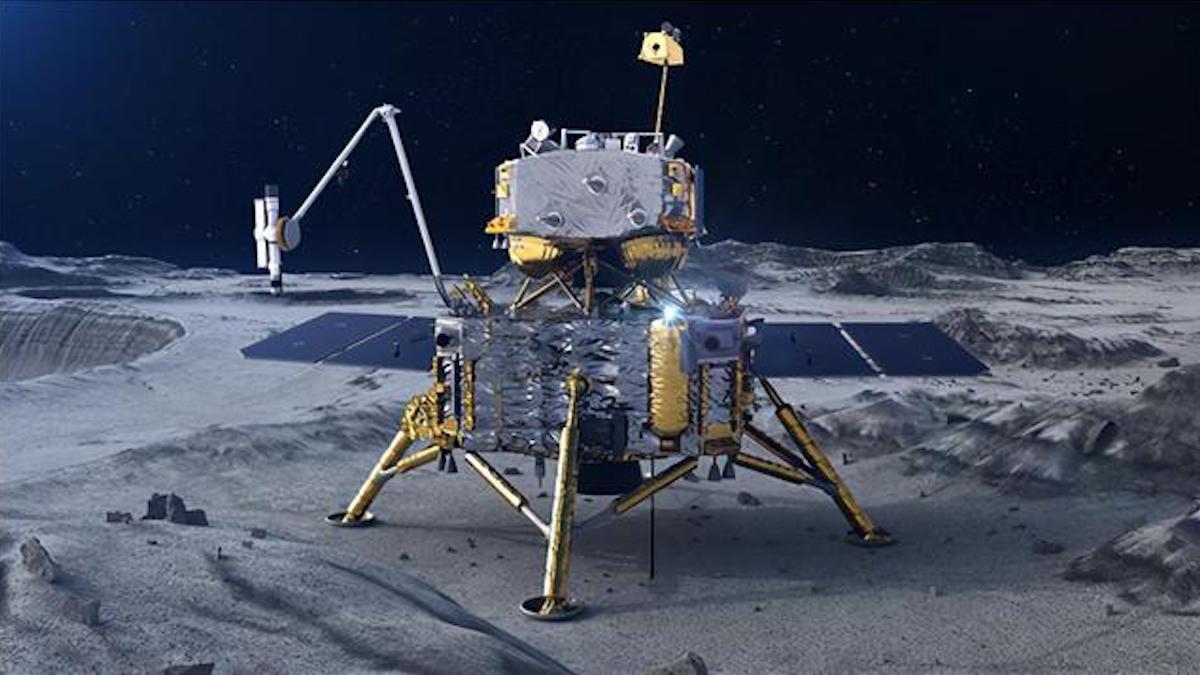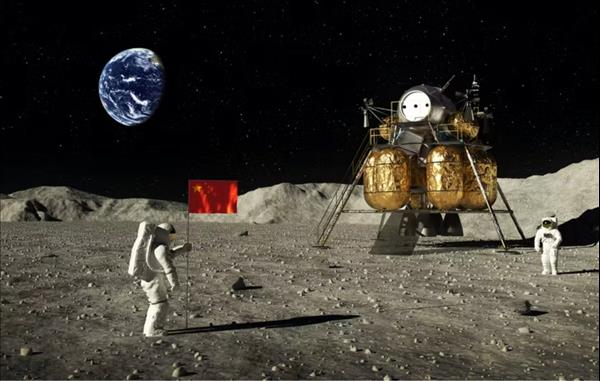(MENAFN- Asia Times) As China offers new details of its Moon-exploration program, American space officials worry that the Beijing will turn a new Moon race into a territorial and resources grab along the lines of what the Chinese military has been doing here on Earth – establishing bases on contested islands in the South China Sea.
“It is a fact: we're in a space race,” US National Aeronautics and Space Administration Administrator Bill Nelson said in a recent politico interview . If the Chinese“get to a place on the Moon under the guise of scientific research,” he warned,“it is not beyond the realm of possibility that they say, 'Keep out, we're here, this is our territory.' If you doubt that, look at what they did with the Spratly Islands.”

This is Bill Nelson when he was a NASA astronaut – and a Democraatic congressman. He was chairman of the US House of Representatives space subcommittee in 1985-86 when he signed up, trained and flew a six-day mission on the space shuttle Columbia. Later he became a US senator, using the astronaut experience in his campaign ads. Eventually defeated by Republican Rick Scott, he was named NASA administrator by his old Senate colleague, President Joe Biden. Photo: Tampa Bay Times
Politico quoted similar sentiments from others who are influential in Washington's space-policy circles.
Liu Pengyu, spokesperson for the Chinese embassy in Washington, characterized the warning as“irresponsible,” adding:
Cool, clear water
In what Liu described as“normal and legitimate space endeavors,” China plans to set up a research base in the south pole of the Moon by 2028 and use remotely-controlled vehicles to search for water.
Meanwhile, the US plans to send astronauts back to the Moon by 2025, following up the last visit in 1972. It also has a plan to look for water resources at the lunar south pole.
The China National Space Administration (CNSA), a government agency, says it will push forward its fourth lunar exploration program this year and target to bring back some lunar samples for the second time in 2025.
The CNSA says the next three lunar missions between 2025 and 2028 will lay a strong foundation for Chinese astronauts to land on the Moon in the future.
In December 2018, China launched a robotic spacecraft known as Chang'e-4, which was named after the Chinese goddess of the Moon. The spacecraft landed on the Moon in January 2019.
In late 2020, Chang'e-5, carried by a Long March 5 rocket, successfully brought 1.73 kilograms of lunar samples back to Earth.

Chang'e-5 brought lunar samples back to Earth in 2020. Photo: screengrab, CCTV
On Monday, the CNSA announced its plan to launch more robotic spacecraft to the Moon.
Wu Weiren, chief designer of the program, said Chang'e-6 would fly to the Moon around 2025 and bring back at least 2 kgs of samples to Earth.
Wu said Chang'e-7 would land on the lunar south pole, or the so-called“dark side of the Moon,” in 2026 to search for water. He said Chang'e-8 would land at the same site on the Moon around 2028 and form a research base with Chang'e-7.
The Chinese lunar base will have a lunar reconnaissance orbiter, a landing vehicle, a rover, a spacecraft and some scientific equipment.
Prior to this announcement, Wu said last November that China had already set up a plan to send its astronauts to the Moon within the next 10 years. He said the Moon would then be a transit for Chinese astronauts to reach Mars.
He said China would have to boost the thrust of its rocket engine by four times in order to lift a manned spacecraft to the Earth-Moon transfer orbit.
According to Chinese media, China's Long March 5 rocket has eight YF-100 and two YF-77 engines. It has a thrust of 1,060 tons to lift 25 tons to low Earth orbit and 8 tons to Earth-Moon-transfer orbit. The design of YF-100 originated from the RF-120, which was produced by KB Pivdenne in Ukraine several decades ago.

Space policy is politics, too. Ukraine President Volodmyr Zelensky during his recent Washington trip visited with NASA Administrator Bill Nelson, who has made news since then by questioning China's space policy. As it happens, the design of China's YF-100 rocket originated from the RF-120, which was produced by KB Pivdenne in Ukraine several decades ago. Now, Zelensky says, he wants to restore Ukraine to the status of space power. Photo: Office of the Ukraininan President
China plans to test its Long March 9 in 2028 or 2029 using its new YF-135 engine, which has four times the thrust of the YF-100. The Long March 9 will have a thrust of 5,000 tons to lift 140 tons into low Earth orbit and 50 tons to Earth-Moon-transfer orbit. A 50-ton spacecraft is big enough to carry some astronauts.
On Monday, Chinese state media published a series of articles to promote the country's lunar missions.
Oxygen for astronauts The promotion came after NASA said on January 9 that it would try to extract oxygen from the ice at the lunar south pole next year and build a pipeline to transport the gas. It said the facility would be able to provide oxygen to Artemis astronauts as early as 2026. The hope is to find a practically unlimited source of water, oxygen and hydrogen.
On November 15 last year, NASA launched the Artemis 1, an unmanned spacecraft, to the moon without landing. The spacecraft successfully returned to Earth on December 11.
Artemis 2 will take four astronauts to repeat the journey in 2024. Artemis 3, supported by SpaceX's human landing system (HLS), will send astronauts to land on the moon in 2025.
In an interview with Japan's national broadcaster NHK on Monday, NASA's Nelson, a former astronaut and a former US senator representing Florida, expressed concern about the prospect China might seek to lay claim to the south pole of the moon and the water and oxygen that may be found there.“They would go to the south pole, where we think the resources are, and say, 'This is our territory.'” He called for US-China dialog.
international law forbids making territorial claims on celestial bodies, the Moon included.
A Hubei-based columnist dismissively wrote in an article on Monday that Nelson wanted to create tensions between China and the US to bolster requests for more government funding.
read: us-china in a heated tit-for-tat moon race
Follow Jeff Pao on Twitter at @jeffpao3


























Comments
No comment